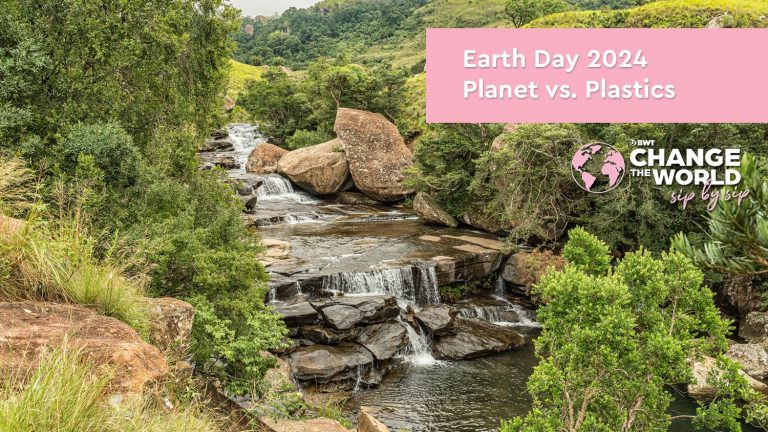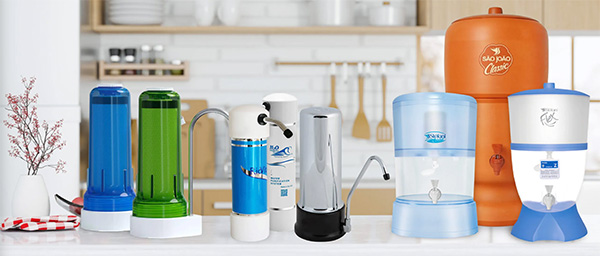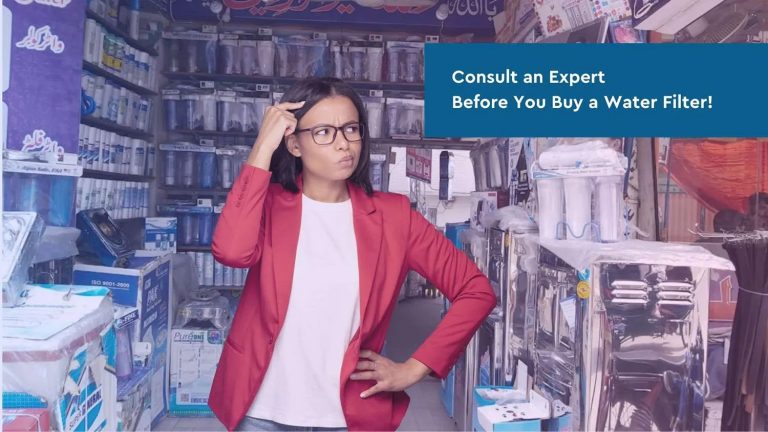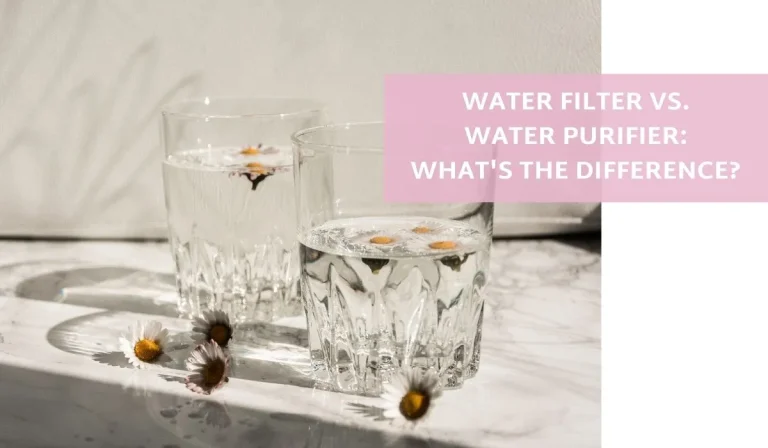No products in the basket.

Earth Day 2024 – Planet vs. Plastics
Plastic Pollution is a Pressing Global Issue with Far-Reaching Consequences. Here are Some Key Statistics: Global Plastics Production: Global plastics production has doubled since the

Is water filtration and water purification the same thing? If you’re new to the world of water filtration and purification, a question like this may leave you with even more questions than answers.
Once you’ve completed reading this article, we hope that you’ll be able to confidently shop for your ideal water filter or water purifier and reap the benefits of pure, clean water. Let’s dive in!
Why does one need to filter or purify water? Municipalities add water treatment chemicals like chlorine to your tap water. The pipes used to get the water to your house may also be old and rusty and have leakages that introduce rust, sediments and harmful contaminants. Best avoided!
For the more curious minds, please read on for more detail …
A water filter filters water through a membrane or a filter medium like ceramic, carbon or sand. The effectiveness depends on how small the pores are in the membrane or the spaces between the elements of the filter medium.
For example,
GAC (Granular Activated Carbon), has a pore size of around 20 micron. We use this in many of our countertop water filters and undercounter water filters.
These are the main types of water filters you can install in your home and/or office.
A whole-house water filter system services, well … your whole house, and it’s able to do this because it’s connected via your incoming water mains.
In many whole-house water filter systems, such as our Double Big Blue 20-Inch Water Filter and Triple Big Blue 20″ Water Filter, the water passes through several processes – initially through a sediment pre-filter, which captures sediment, silt and rust particles, and then through a granular activated carbon filter, which removes chemicals like chlorine and harmful organic contaminants. It also improves the colour, taste, and odour of your water.
In the case of the H2O | BWT AquaStar UV, it does all of the above and disinfects the water with a UV unit.

Oftentimes, you may have several water challenges that you need solved. In cases like that, we will design a treatment sequence for you; a line of water treatment units, each performing their own function, to give you amazing, clear, safe and pure drinking water no matter the source or contaminants.

Being able to simply attach countertop water filters directly to your faucet (as would be the case with our Deluxe Countertop Purifier Chlora+), can be wonderfully convenient if all you require is pure, filtered drinking water.
Undercounter water filters are just as convenient to have in the kitchen as countertop water filters, what’s more, they also open up much-needed countertop space.
Harmful chemicals and particles can also affect your skin and hair, leaving them feeling dry and uncomfortable. If this is an issue you think you may have, investing in a water filter shower head might be a good idea. All you have to do is attach it to your shower spigot and you’re ready to go!
You wouldn’t be completely incorrect by assuming that water filters and water purifiers are the same things. They indeed function very similarly, both water purifiers and water filters work by removing impurities in your water.
The difference is that a water purifier goes a little deeper by eliminating biological contaminants and removing certain minerals, leaving only the purest drinkable water behind. Water purifiers can use either Reverse Osmosis, Chemical Exchange, Distillation, UV Treatment, or a combination of these methods.
Here’s a quick breakdown of how each of these methods of purification works and why they may be necessary.

Reverse osmosis, which pumps water through a porous membrane, might be categorized as water filtration, however, because it demineralizes or deionizes water through a semi-permeable reverse osmosis membrane, it is considered to be a form of water purification. As a result, it is not straightforward water filtration.
Please note: Purifiers using reverse osmosis (RO) may end up removing all minerals, including the good ones! We recommend that you invest in a RO water purifier with a remineraliser which adds the good minerals back into the water. Take a look at the specifications of our RO water purifiers to find out more about how this process works.
This term may sound familiar, and it is simply the boiling of water, which creates steam, which is by its very nature utterly pure ﹘no contaminants remain in the steam. The steam is then condensed back into pure water. H2O | BWT does not use distillation on their wide variety of water filtration and purification products. This is a process usually only used in clinical laboratories.
What are the risks of drinking distilled water?
The main dangers of drinking only distilled water are related to its deficiency in minerals like calcium and magnesium. According to an older report for the World Health Organization (WHO), the following are some negative impacts of consuming only distilled or low mineral water:
The WHO claims that the absence of minerals and electrolytes in distilled water is a contributing factor in these and other related health issues. This deficiency may cause potentially unhealthy changes to the body’s sensitive sodium, potassium, fluid, calcium, magnesium, zinc, and phosphorus balance.
In addition to water, the body also loses sodium and other minerals as it excretes urine and sweat. A person needs to replenish certain minerals for their body to function properly.
Since all additives and minerals will have been eliminated during the distillation process, drinking distilled water won’t restore minerals lost through perspiration.
Any material that distillate water comes in contact with, including plastics and the human body (even the teeth), absorbs trace amounts of minerals. However, a person shouldn’t become deficient if they consume a balanced diet that includes the required amounts of fruits and vegetables.
Most people will obtain the salts and minerals they require from these other sources because they consume a range of foods and beverages throughout the day.
Consuming distilled water as part of a healthy diet is not harmful. Foods that replenish any minerals lost via sweat should be a part of a balanced diet.

Ultraviolet water purification is one of the most effective ways to eliminate organisms from water. In this process, ultraviolet light penetrates the water, eliminating organisms, such as viruses and bacteria. Have a look at our AquaStar UV Water Filter to find out more detail about how this process works.

A good example of a chemical exchange is our exclusive KDF water purification medium, it exchanges harmful contaminant electrons (found in chlorine, iron, hydrogen sulphide, lead, mercury, calcium carbonate, magnesium, chromium, bacteria, algae, and fungi) into harmless components.
In the case of filtered water vs purified water, the best way to conclude this is the following:
Sometimes, water filtration and purification are performed in one water treatment unit. Watch the video to see the working of one of our water filters that do this, or the working of a full Reverse Osmosis System with filters and remineralisers.
Hopefully, after diving into this well of information on water purifiers vs water filters, you’ll find it easier to make the right choice, whether you choose a water filter or purifier is up to you and largely depends on the quality of water you have access to, and the filtration or purification result you need.
H2O BWT offers a vast variety of high-quality water filters and water purifiers, so you can be certain you’ll find the right fit for your home or office.

Plastic Pollution is a Pressing Global Issue with Far-Reaching Consequences. Here are Some Key Statistics: Global Plastics Production: Global plastics production has doubled since the

Although all living things require water, not all water is of the same quality. The taste, safety, and usability of water are all impacted by

Is water filtration and water purification the same thing? If you’re new to the world of water filtration and purification, a question like this may

The safety and well-being of employees has been the primary concern of every business owner since the lockdown ended and more of us returned to

As the summer temperatures rapidly rise, bringing the promise of sunny days and outdoor adventures, prioritising hydration is crucial. The summer season demands that you
Join the H2O | BWT family and get R100 off your first order
Please note, minimum spend of R1000.